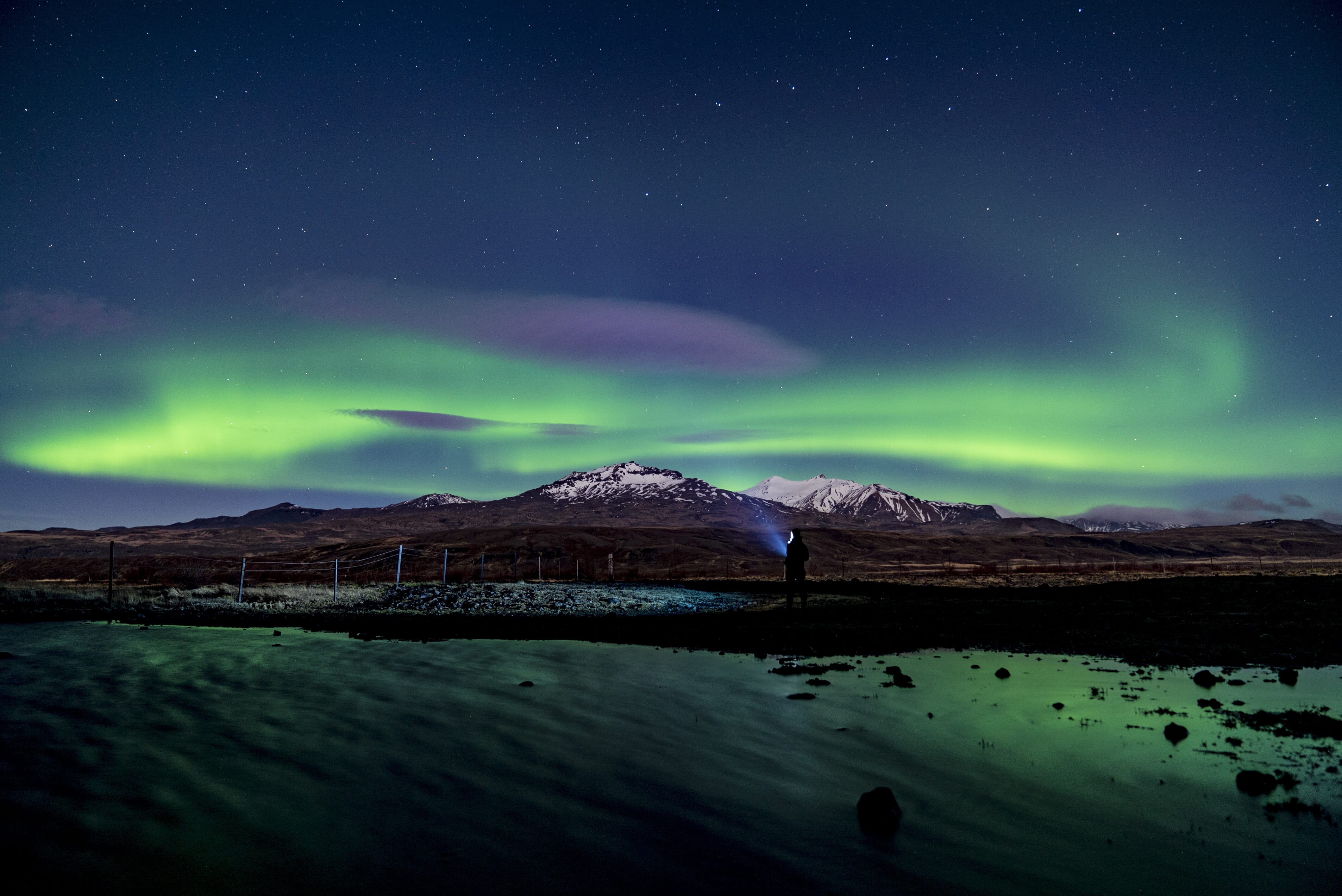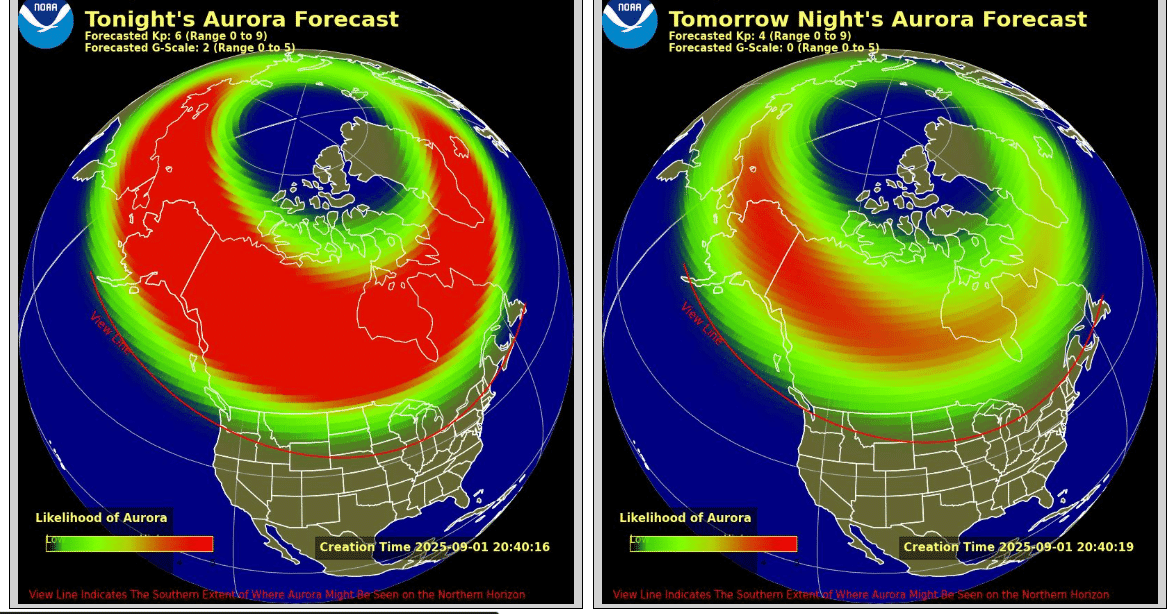
This Labor Day weekend, skywatchers across the United States may be treated to a rare Northern Lights display. A strong cannibal solar storm from the sun is expected to hit Earth, creating vibrant auroras visible in multiple states.
The expected auroras are being powered by a massive coronal mass ejection (CME), a giant cloud of charged solar plasma and magnetic field rising from the sun that blasted off Aug. 30 from sunspot AR4199. According to the U.K. Met Office and NOAA, the CME is expected to arrive at Earth's magnetic field late Sept. 1 or early Sept. 2 (UTC) and could cause strong G3-level geomagnetic storming, with a possibility of G4 (severe) conditions.
 The sun released an eruption known as a coronal mass ejection over the weekend. It is expected to impact the Earth’s magnetic field late Monday into early Tuesday, NOAA’s Space Weather Prediction Center said. When it happens, it will trigger a colorful display of the aurora borealis.
The sun released an eruption known as a coronal mass ejection over the weekend. It is expected to impact the Earth’s magnetic field late Monday into early Tuesday, NOAA’s Space Weather Prediction Center said. When it happens, it will trigger a colorful display of the aurora borealis.
On Monday night, people could see the green or red glow of the aurora in 18 states in the USA.
According to weather forecasters, it won't be as big a show as the ones we've seen across the sky in 2024, but for some people, it will be one of the best chances to catch the lights since spring.
Where to see these auroras
Based on NOAA's prediction map, the northern lights are where to see them
- New York
- Illinois
- Michigan
- Nebraska
- Oregon
- Washington
- Connecticut
- Maine
- Vermont
- Minnesota
- Wisconsin
- North Dakota
- South Dakota
- Montana
- Idaho
- Wyoming
- Pennsylvania
- New Hampshire
When to see these aurora
For aurora viewing, you need to find a dark place away from the city to get away from light pollution. Experts advise skygazing from a local or national park. And keep an eye on the weather forecast, as clouds can block out the display completely.
- Dates: September 1–2, 2025
- Best time: Midnight to early morning
- Look from a dark spot away from city lights
- Clear skies are essential; clouds can block the show completely
Viewing tips
- Head to a darkish region far away from city lights
- appearance north for the great danger to look at the aurora
- Use a protracted-publicity camera or telephone night time mode for photographs
- Get dressed warmly, as nighttime temperatures can drop appreciably
Auroras arise when charged debris from the sun engages with Earth’s magnetic subject, creating shimmering lighting across the night sky.
Will you be stepping outdoors this weekend to catch the Northern lights?

Good information.
ReplyDelete